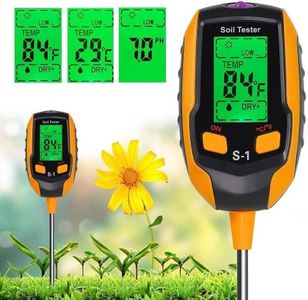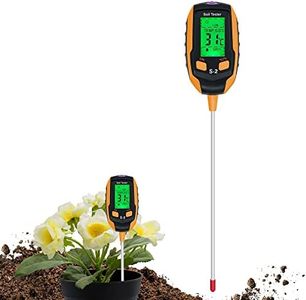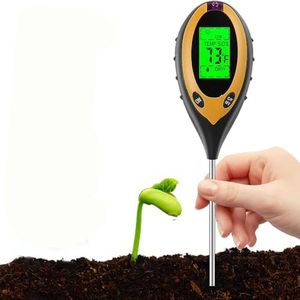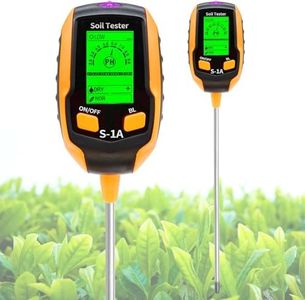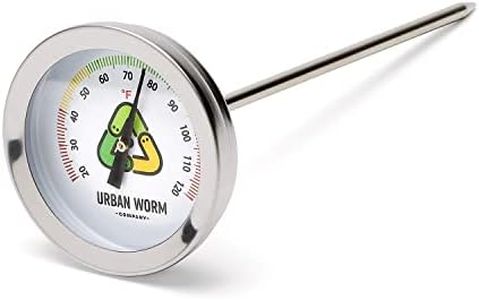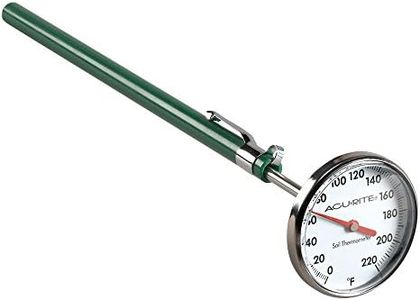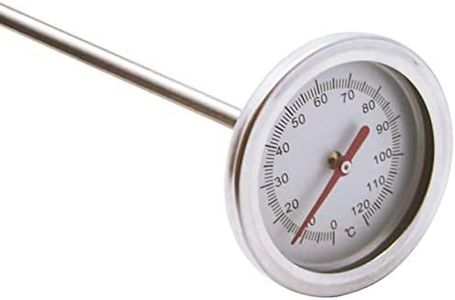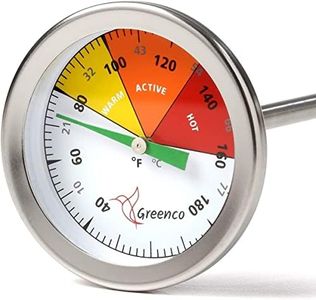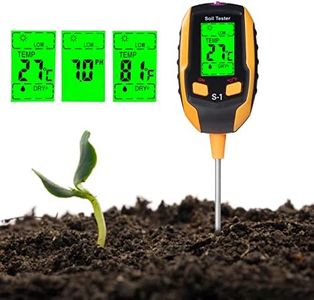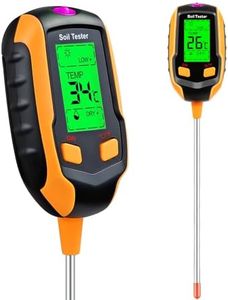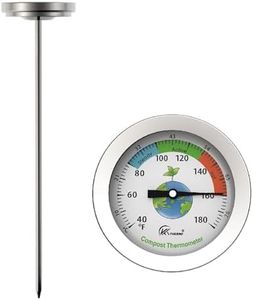We Use CookiesWe use cookies to enhance the security, performance,
functionality and for analytical and promotional activities. By continuing to browse this site you
are agreeing to our privacy policy
10 Best Soil Thermometer
From leading brands and best sellers available on the web.By clicking on a link to a third party's website, log data is shared with that third party.
Buying Guide for the Best Soil Thermometer
Choosing the right soil thermometer isn't just about getting the first one you see. Understanding your needs—like what you'll be planting, where you'll use it, and how often—is key to picking a product that will serve you well. Knowing the most important features will help you confidently compare options and select a thermometer that will help you get reliable results for your garden or scientific project.Temperature RangeThe temperature range tells you the minimum and maximum soil temperatures the thermometer can measure. This is important because different plants have specific temperature requirements for germination and growth. Thermometers usually cover a range starting just below freezing up to around 100°C (212°F), but some might be more limited. If you're gardening in colder regions or measuring compost piles (which can get quite hot), make sure the thermometer covers the temperatures you'll encounter. For most home gardeners, a range of 0°C to 50°C (32°F to 122°F) is sufficient, but for specialty uses, check the extremes.
Probe LengthProbe length is the length of the metal rod you push into the soil to measure temperature. Soil temperature changes with depth, so a longer probe allows you to measure deeper layers, which is useful for root crops or scientific studies. Shorter probes (4-6 inches) are fine for seed beds or surface measurements, while longer probes (8-12 inches or more) help when you need to know about deeper soil layers. Decide based on the crops you plan to grow or if you need surface versus deeper readings.
AccuracyAccuracy indicates how close the thermometer's reading is to the actual soil temperature. This is important if you need precise readings for delicate seedlings or research. Standard thermometers may have accuracy within ±2°C (±3.6°F), while more precise models can go down to ±0.5°C. For general gardening, standard accuracy is usually enough, but for scientific uses or finicky plants, choose a more accurate thermometer.
Material and DurabilityMaterials used for both the probe and the dial or display are important for longevity and safety. Probes are usually stainless steel, which resists rust and bending. The housing may be plastic, metal, or glass. If you’ll use the thermometer outdoors, in wet conditions, or for tough soils, look for sturdy and weather-resistant materials. Pick the build quality that matches how and where you'll use it.
Type of Display (Analog vs. Digital)Soil thermometers either have an analog dial or a digital screen. Analog models are simple to use, don’t require batteries, and are often more rugged, but may be harder to read with small numbers. Digital displays are easier to read and often more precise, but need batteries and might be less durable. Choose analog for simplicity and reliability, or digital if you want easy reading and extra features.
Ease of CleaningSince soil thermometers go directly into the ground, they get dirty. Ease of cleaning depends on the design—smooth, sealed probes are easiest because dirt doesn’t get trapped, and water-resistant models can be washed under a tap. If you plan to use your thermometer often or in different areas, pick one that is easy to clean so you can prevent cross-contamination.

